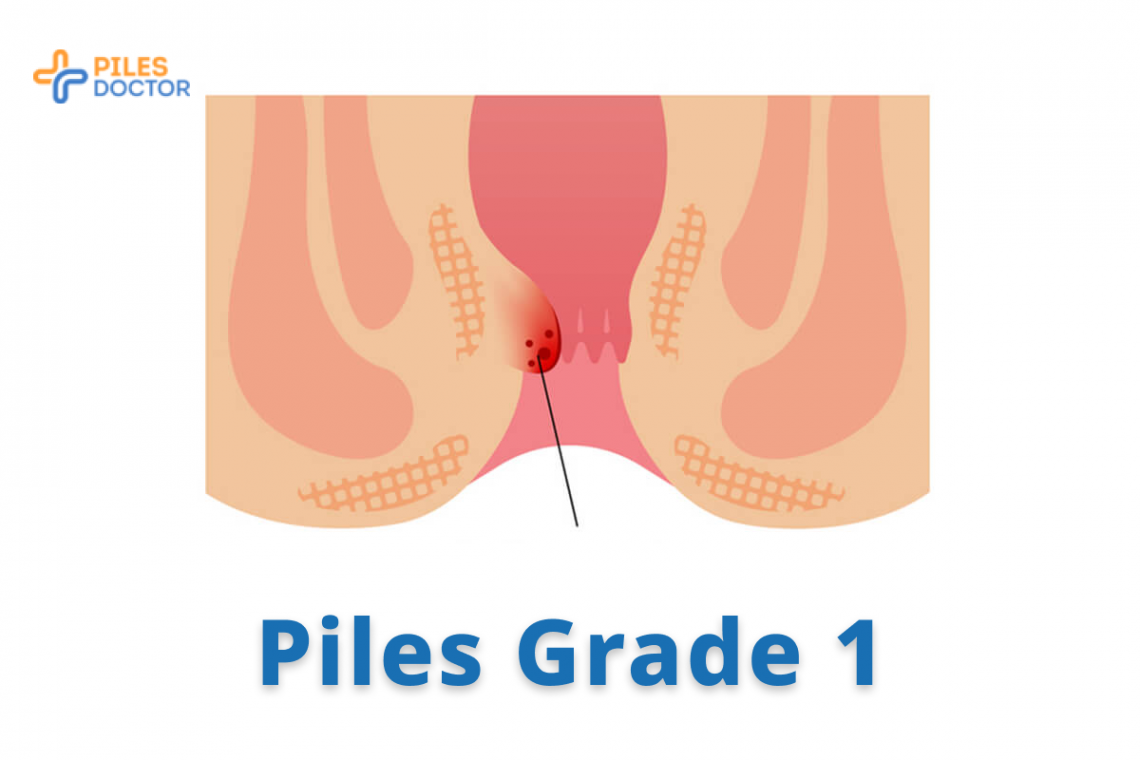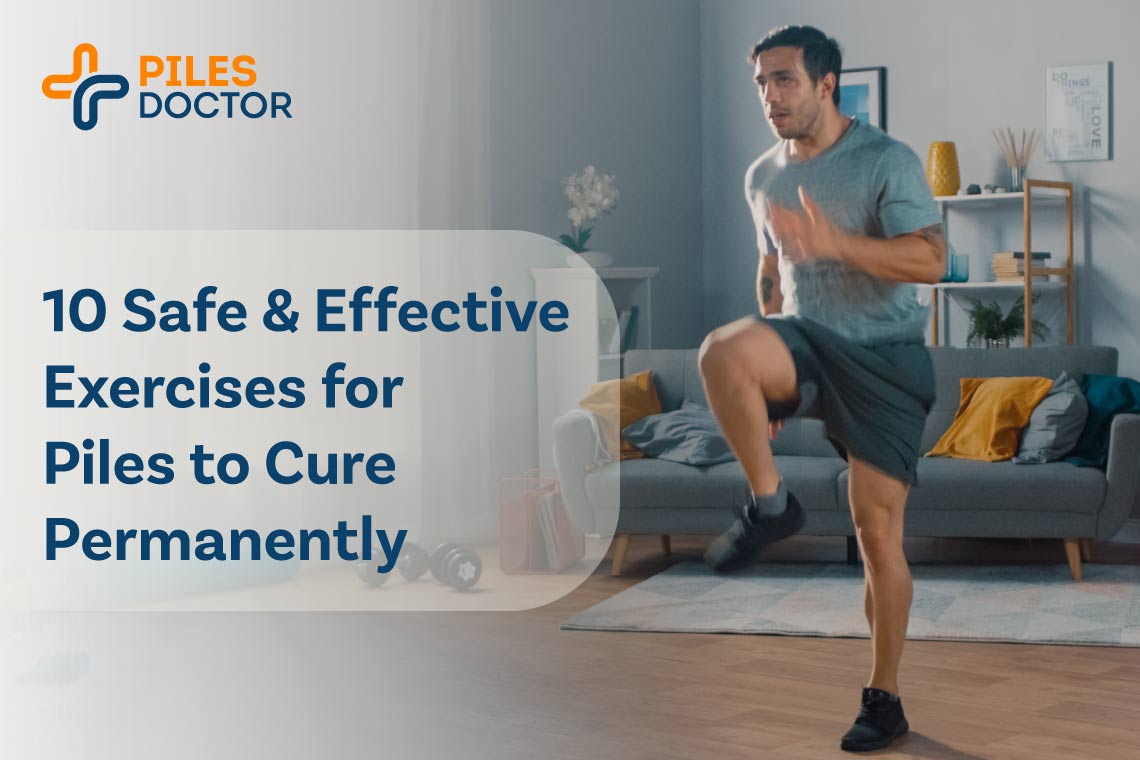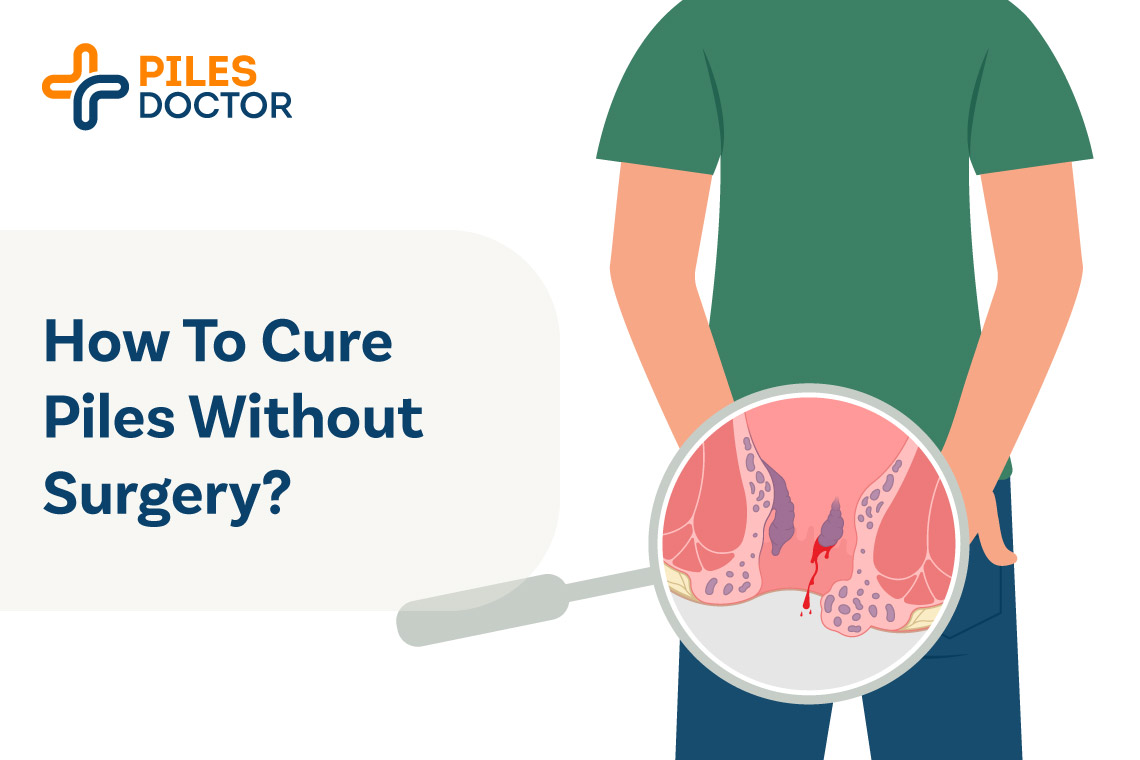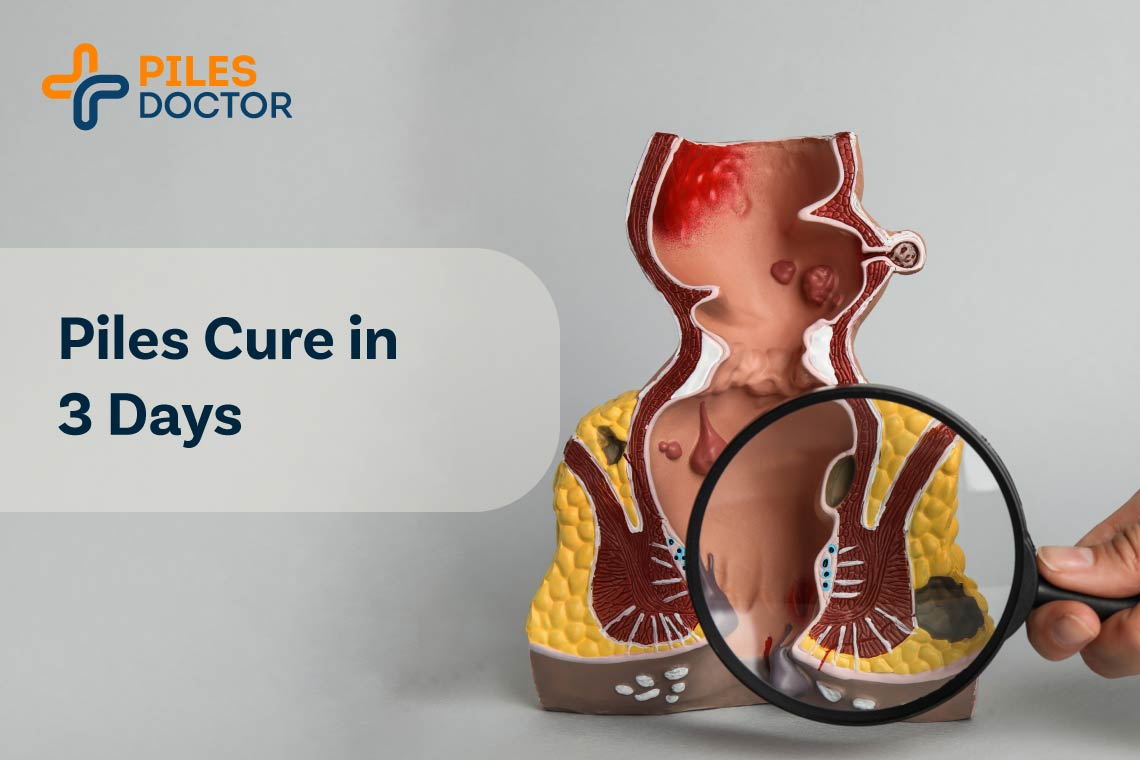Grade 1 is the first stage of piles or hemorrhoids. If you are experiencing some unusual symptoms such as occasional itching, mild pain, discomfort, and significantly less bleeding during passing stools, you might be dealing with grade 1 piles.
This blog will help you understand what grade 1 internal hemorrhoids are, their causes and symptoms, and how to manage them. This blog will give you a clear understanding and simple insights into this condition so you can take better care of your health and well-being.
So, let’s start by understanding what grade 1 piles is.
What is Grade 1 Piles?
Grade 1 piles is the initial stage of piles. At this stage, the swollen blood vessels are very small in size and remain inside the lining of the anus. You can’t see or touch them from the anus. Grade 1 hemorrhoids might bleed sometimes but not prolapse outside the anus.
Although grade 1 is a mild condition of the piles, if left untreated, it can lead to severe condition of piles.
It is recommended to consult an experienced proctologist to prevent worsening the condition.
What is the Treatment of Grade 1 Piles?
At the 1st stage of piles, you may not notice symptoms unless there’s bleeding during bowel movements. Generally, grade 1 internal hemorrhoids do not require immediate surgical intervention. It can be managed with conservative methods, including:
Over-the-counter medicines
There are various medicines available to treat and prevent further infection when grade 1 piles symptoms appear first. Some of them are:
- Daflon 500 mg for piles: Daflon is a medicine that can ease grade 1 hemorrhoids symptoms. It contains 90% diosmin and 10% hesperidin derived from plants that can shrink piles naturally. Additionally, it can improve the blood flow into the anorectal veins and reduce swelling.
- Liquid Paraffin for Piles: Liquid paraffin is considered one of the best piles treatments. It lubricates the anal passage and makes the bowel movements less painful. Paraffin can be taken orally, but you should consult an experienced proctologist before taking any medicines.
- Lidocaine-hydrocortisone cream for piles: This is one of the best medicines to manage piles pain and itching. Lidocaine and hydrocortisone are the two main ingredients in the cream that numb the anal area and prevent you from feeling pain, itching, and inflammation, etc. Use this medicine daily after bowel movements to alleviate pain and itching.
- Lignocaine 2% gel for piles: Bowel movements are excruciating if you have piles. Lignocaine gel can help eliminate pain by numbing the anal area when you pass stools. You must apply this gel to the anus 10-15 minutes before bowel movements. This is considered as one of the best painkillers for piles.
- Lactulose for piles: Lactulose is the best laxative to relieve constipation, one of the most common causes of piles. It provides water into the intestines, making the stools soft and easy to pass.
Lifestyle modifications
Lifestyle modifications play a crucial role in not only managing grade 1 piles symptoms but also helping in preventing piles. Here are some lifestyle modifications mentioned below:
- If you are overweight or obese, shed off your extra kilos, as excessive weight can aggravate piles.
- If your job needs prolonged sitting, make sure to take breaks frequently. It reduces anorectal pressure and improves blood flow in the anal area.
- Eat fiber-rich food and drink plenty of water to avoid straining during bowel movements, as constipation can worsen piles.
Dietary Changes
- Add fiber-rich foods such as whole wheat, fruits, green leafy vegetables, legumes, beans, avocados etc can help soften your stools and prevent constipation.
- Avoid alcohol and caffeinated drinks as they can dehydrate your body and worsen your piles.
- Avoid spicy food as it can irritate piles.
- Aim to drink at least 8-10 glasses of water every day. Water can soften your stools and make them easier to pass, reducing the strain in your anal area.
- Add nuts and seeds like almonds, cashews, flaxseeds, etc to your diet. They are a high source of healthy fat and fiber as they can prevent constipation and reduce grade 1 hemorrhoid symptoms.
- Buttermilk is good because it helps digest food and lowers swelling. Both yogurt and buttermilk are good for easing grade 1 hemorrhoids symptoms.
Treatment Options
Before any treatment, the doctor will recommend some diagnostic tests to examine the condition.
During the consultation, the doctor may ask questions about your grade 1 hemorrhoids symptoms, medical history, family history, lifestyle habits, etc.
At first, the doctor will visually analyze the anus; then he may suggest some other diagnostic tests as well, such as:
Digital rectum exam (DRE): In this procedure, the doctor will insert a lubricated finger into the anus to check the abnormal growth.
Anoscopy: The doctor uses a small tool with a light to look inside the back passage. This helps find out how big and severe the piles are.
Sigmoidoscopy: Here, the doctor uses a tube with a light and camera to check the lower part of your large intestine for any issues.
Colonoscopy: This is a test to look inside the whole large intestine. It helps determine if bleeding is from piles or something else and guides the doctor on the best treatment.
Non-surgical approaches to treat grade 1 piles.
Here are some non-surgical approaches to treat grade 1 internal hemorrhoids.
Rubber Band Ligation
Rubber band ligation is a commonly performed non-surgical procedure to treat piles. In this procedure, the surgeon will tie rubber bands around the piles to cut off their blood supply. Over time, piles will shrink and eventually fall off. This procedure is performed on an outpatient basis under the influence of topical or spinal anesthesia. This is an effective procedure but there are chances of recurrence if you will not follow lifestyle and dietary changes to prevent piles.
The following mentioned steps are involved in the rubber band ligation procedure to treat grade 1 hemorrhoids.
- The surgeon will give you topical anesthesia to numb the anal area, so you won’t feel any pain and discomfort during the procedure.
- Then the doctor will access the piles through a proctoscope.
- Then the doctor will use a small device and tie the piles with rubber bands to stop the blood supply to the piles.
- In a few days, the piles get smaller because the blood flow is cut off and eventually falls off by itself.
This is a quick procedure and offers faster recovery than surgical procedures. The cost of rubber band ligation procedure range between INR 15,000 to INR 30,000 in India.
Sclerotherapy
Sclerotherapy is an outpatient procedure in which the doctor injects a chemical into the piles to make the lumps hard and cut off their blood supply, eventually making them fall over time.
Here are the steps of sclerotherapy mentioned to help you understand the procedure quickly.
- You will lie on the bed and the doctor check the piles through a proctoscope.
- Then the doctor will inject a special chemical into the piles which makes the piles shrink gradually,
- Over a few weeks, the piles will get smaller because of the chemical and eventually disappear.
The cost of Sclerotherapy lies between the range of INR 10,000 to INR 20,000 in India.
Surgical Treatments
Open Hemorrhoidectomy
Open hemorrhoidectomy is a traditional procedure to treat piles. This procedure is performed under general anesthesia. In this procedure, the surgeon makes an incision and excises piles. This is a more invasive procedure than other procedures. Open hemorrhoidectomy may take more than 4-5 weeks to recover completely after the procedure. Usually, this method is performed for piles of the most advanced stage.
Here are the steps of open piles removal surgery mentioned below to help you understand the procedure easily.
- First, the surgeon will sedate you with anesthesia, so you won’t feel pain and discomfort during the procedure.
- Then, he will make an incision around the anal area and cut off the piles.
- Then the surgeon will stitch the wound to heal.
- Over time, the surgical site will heal and you will feel better.
The procedure might cost between the range of INR 30,000 to INR 60,000 in India.
Laser Hemorrhoidectomy
Laser hemorrhoidectomy is a minimally invasive procedure to treat piles with the use of laser energy. This procedure allows more precise results and faster recovery as compared to traditional procedures.
Here are the steps involved in laser piles removal surgery:
- You will be sedated under local anesthesia.
- Then the doctor will use a laser light to shed off the piles. The laser light precisely hit the piles and left surrounding healthy tissues untouched.
- Then the surgical area will get better over time.
The cost of laser piles removal surgery may lie between INR 40,000 to INR 60,000 in India.
Stapled Hemorrhoidectomy
Stapled hemorrhoidectomy, also known as stapling, is a surgical procedure that treats hemorrhoids by removing a ring of excess tissue, causing bleeding and prolapse. This method lifts the hemorrhoids back to their original position. Less painful than traditional surgery, it offers a quicker recovery, but there might be a higher recurrence risk.
Here are the steps of stapled hemorrhoidectomy:
- Tissue from further up in the anal canal will be used.
- A stapling device will hold this tissue in place.
- This will lift the hemorrhoids back into their normal position.
It is important to note that the surgical treatment option is not a choice for the patient, it is always recommended by an experienced proctologist after evaluating the severity of the condition.
Infrared Coagulation
Infrared Coagulation is a minimally invasive procedure to treat hemorrhoids using infrared light. The light produces heat, causing scar tissue to form and cut off the blood supply to the hemorrhoid, making it shrink. The procedure is quick, often done in an outpatient setting, with minimal pain and a fast recovery time.
Here are the steps helps you understand the procedure easily.
- An infrared device will emit a beam of light.
- The heat from this light will create scar tissue, which cuts off the blood supply to the hemorrhoid.
What if Grade 1 Piles is left Untreated?
Some severe complications may arise if you leave grade 1 piles untreated.
- Developed to severe stages: Grade 1 piles is small in size and remain inside the lining of the anus. Untreated grade 1 piles might grow to grade 2 and protrude out the anus during bowel movements.
- Excessive bleeding and discomfort: Untreated grade 1 piles can grow and may bleed excessively during bowel movements.
- Anemia: Excessive bleeding may lead to anemia.
- Painful: Internal piles can become more painful if left untreated.
- Thrombosed piles: Thrombosed piles occurs when the blood clots develop into untreated piles. It can cause more pain and soreness and affect your ability to do simple tasks like sitting, walking etc.
- Infection: Due to a lack of blood flow, prolapsed internal hemorrhoids are more likely to get infected.
How to Prevent Grade 1 Piles?
Here are some ways to prevent grade 1 piles, including
- Fiber-Rich Diet: You should include fiber-rich foods to avoid constipation and avoid straining the anal area. You can add whole wheat, oats, fruits, green leafy vegetables etc in your diet.
- Stay Hydrated: Drink plenty of water and fluids to ensure a healthy digestive system and prevent straining during passing stools. Aim to drink at least 8-10 glasses of water each day.
- Regular Exercise: Engaging in regular physical activity, especially walking and aerobic exercises, helps promote healthy bowel movements and reduces the risk of constipation.
- Limit Time on the Toilet: Avoid using mobile phones or reading newspapers in the toilet. Prolonged sitting in the toilet can increase pressure in the rectal veins, which can lead to the formation of piles.
- Maintain Healthy Weight: Being overweight can increase the pressure on the veins in the pelvic and rectal areas, elevating the risk of piles.
- Avoid Laxative Overuse: Excessive usage of laxatives can lead to irregular bowel movements. Instead of laxatives, drink plenty of water and eat fiber-rich foods to avoid constipation.
- Limit Alcohol and Spicy Foods: Alcohol cause dehydration which can lead to swelling in the blood vessels and spicy foods can irritate the anal area. Both can lead to the formation of piles.
- Use Wet Wipes: Instead of dry toilet paper, opt for unscented, alcohol-free wet wipes, which are gentler on the anal area.
- Elevate Your Feet: When using the toilet, a small footstool under your feet can help position your body in a more comfortable position, reducing strain.
By incorporating these habits into your daily routine, you can significantly reduce the risk of developing piles and ensure better overall digestive health.
Conclusion
Although grade 1 piles don’t protrude outside the anus and are usually painless, their presence can cause mild discomfort or occasional bleeding during bowel movements. It’s crucial to recognize the signs early and adopt preventive measures.
Simple lifestyle changes, such as including more fiber in the diet, drinking ample water, and avoiding prolonged sitting, can play a significant role in managing and preventing the progression of piles.
It is always recommended to consult an experienced proctologist for proper diagnosis and treatment recommendations.




